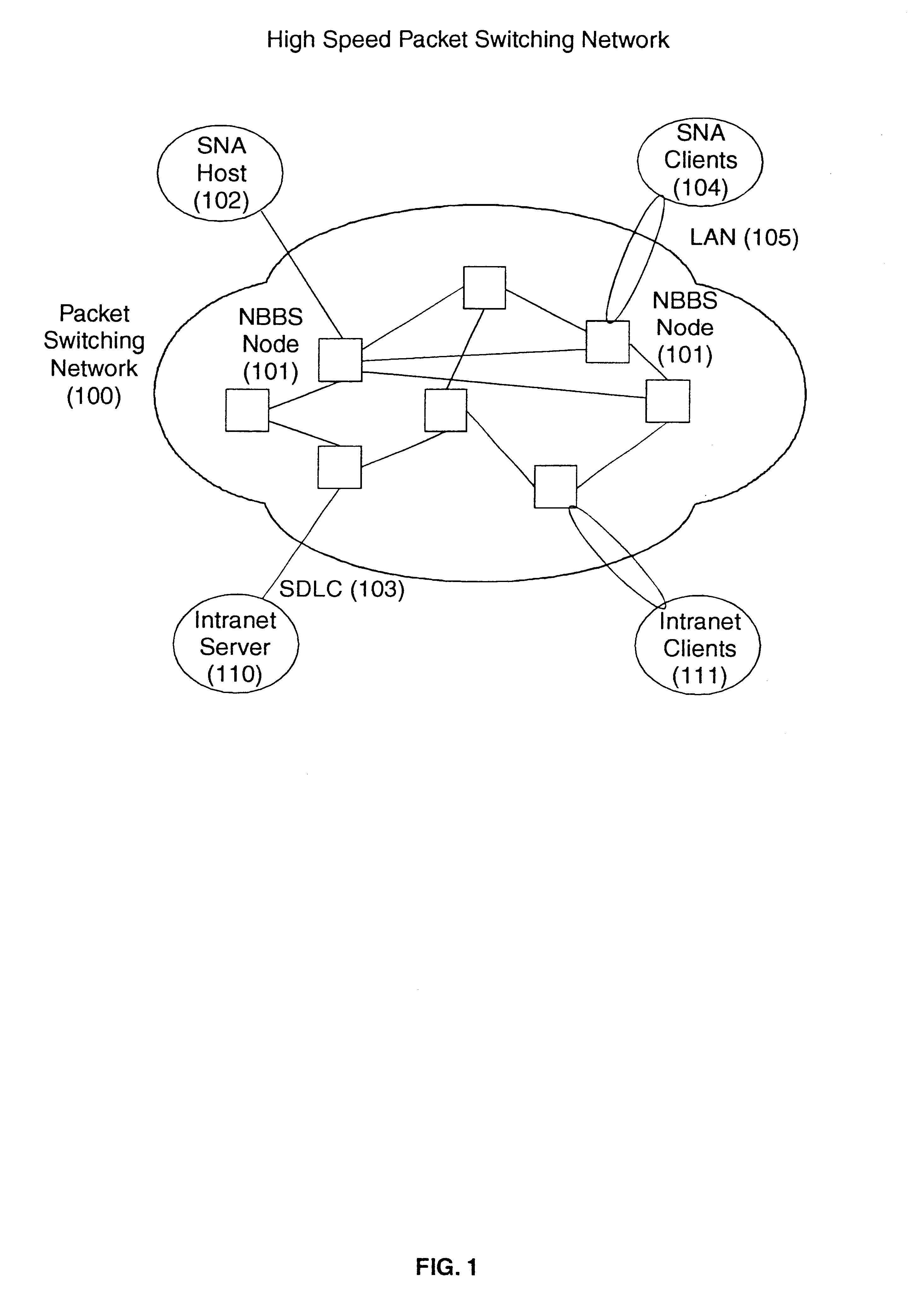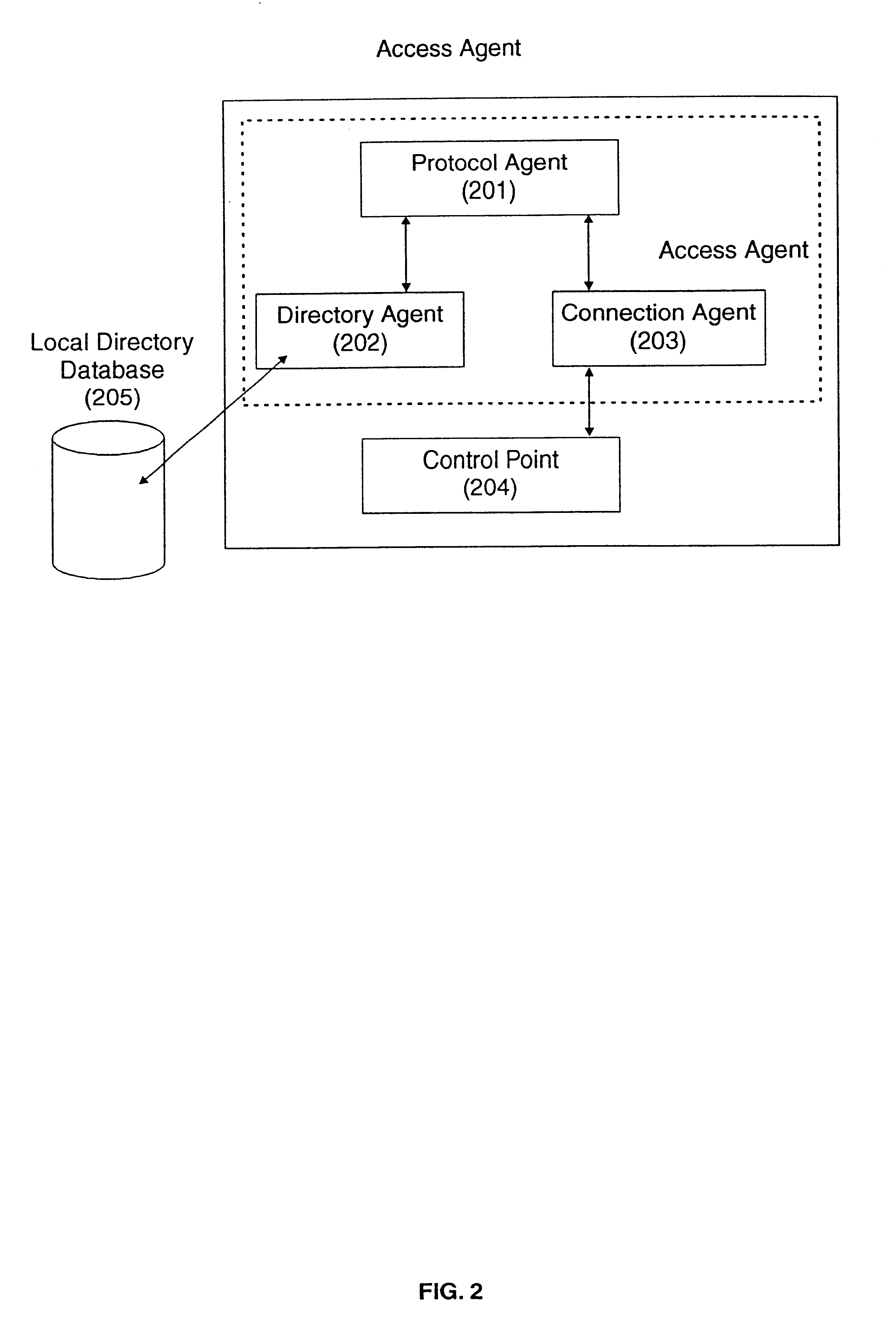Method and system for pre-loading in an NBBS network the local directory database of network nodes with the location of the more frequently requested resources
a network node and database technology, applied in data switching networks, frequency-division multiplexes, instruments, etc., can solve the problems of data profile becoming more bandwidth consuming, bursting, non-deterministic and requires more connectivity, communication networks have limited resources at their disposal to ensure efficient packet transmission, and high throughput and a very short packet processing tim
- Summary
- Abstract
- Description
- Claims
- Application Information
AI Technical Summary
Benefits of technology
Problems solved by technology
Method used
Image
Examples
case a
)
The Directory Agent, finds within its Local Directory Database the addressing information related to the target resource. A Direct Explicit Query message (an Unicast message) is sent (505) to the destination Access Agent in charge of accessing the target resource to verify the addressing information associated with the Destination Access Agent. The information to be verified is locally found by the origin Access Agent within its Local Directory database.
case b
)
The Directory Agent does not find any locally available addressing information related to the requested target resource. An Undirect Explicit Query message (a multicast message) is broadcasted (503) to locate this target resource.
Destination Access Agents
FIG. 6 is a flow chart of the method in a destination Access Agent, of pre-loading the Local Directory Databases of all potential origin Access Agents. When a destination Access Agent receives a request to locate a target resource (an Undirected Explicit Query), the request is forwarded to the Protocol Agent. The Protocol Agent determines whether the Access Agent provides access to that target resource or not. If yes, the normal NBBS process is triggered. The Directory Agent replies positively to the origin Access Agent that sent the original request.
The destination Protocol Agent that received the Undirected Explicit Query (600) is at this point aware that a search for a resource it provides access to, has been requested by an ori...
PUM
 Login to View More
Login to View More Abstract
Description
Claims
Application Information
 Login to View More
Login to View More - R&D
- Intellectual Property
- Life Sciences
- Materials
- Tech Scout
- Unparalleled Data Quality
- Higher Quality Content
- 60% Fewer Hallucinations
Browse by: Latest US Patents, China's latest patents, Technical Efficacy Thesaurus, Application Domain, Technology Topic, Popular Technical Reports.
© 2025 PatSnap. All rights reserved.Legal|Privacy policy|Modern Slavery Act Transparency Statement|Sitemap|About US| Contact US: help@patsnap.com



